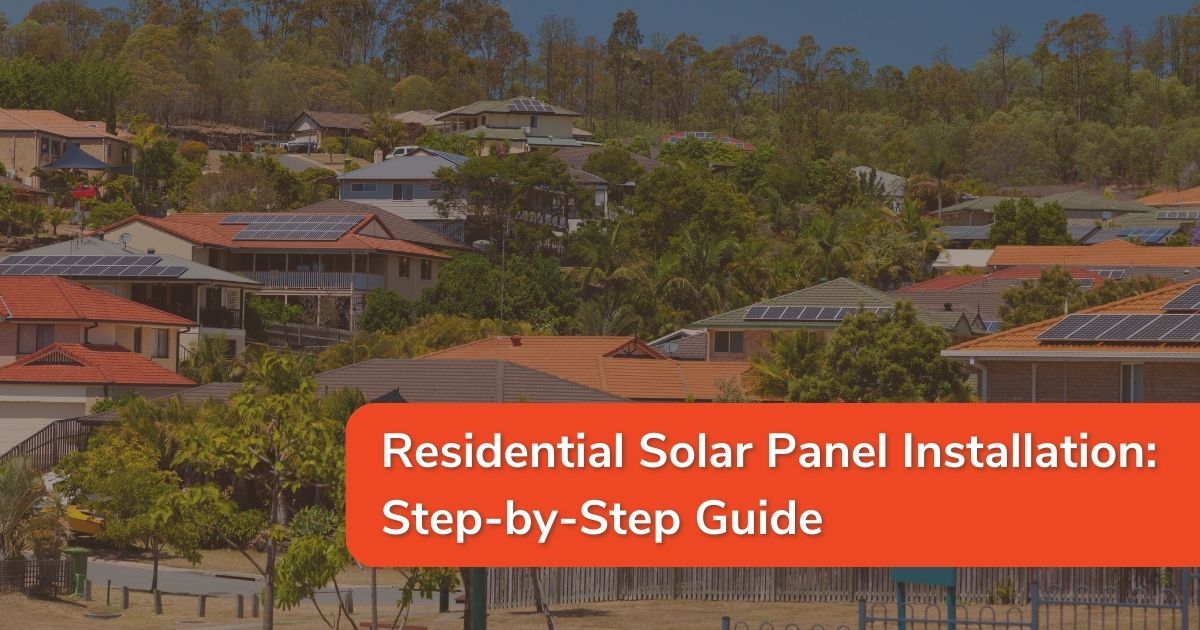Residential Solar Panel Installation: Step-by-Step Guide

The global wave towards renewable energy is hitting Australia's shores with unprecedented momentum. As a homeowner in the land down under, you're faced not only with the opportunity but also the responsibility to harness the power of the sun. Residential solar panel systems are not only a wise economic investment but also a crucial step towards a sustainable future. If the idea of solar energy has been shining in the background of your homeowner's dreams, now is the time to turn that thought into action. This is your comprehensive guide to walking through the process of installing solar panels on your home in, a journey that promises to be fulfilling, both for your pocket and for the planet.
Understanding Residential Solar Panel Systems
Before starting your journey towards solar independence, it's vital to understand what a solar panel system entails. Solar panels work by converting sunlight into electricity through the photovoltaic effect. But the process is a bit more complex than it seems.
How Solar Panels Work
Sunlight consists of photons, little packets of energy that can be harnessed together to break the bonds between electrons and atoms, creating an electric current. Silicon, the main component of most solar panels, is made up of atomic structures that easily release an electron when struck by photons. The flow of these free electrons is what we know as electricity.
Types of Solar Panels
You might have heard about monocrystalline, polycrystalline, or even thin-film solar panels. Each has its advantages in terms of efficiency, cost, and space requirement, but all fundamentally do the same job, differing in their technologies and makeup.
Determining Energy Needs and System Size
To make the most out of your solar investment, understanding your energy needs and the size of the system required is crucial. This is a balance between your available roof space, the efficiency of your panels, and your typical energy consumption. A professional assessment can help you calculate the perfect fit for your household.
Assessing Your Home's Suitability for Solar Panels
Not every home is created equal when it comes to solar panel installation. Several factors must be considered to ensure that solar is a viable option.
Evaluating Roof Orientation and Shading
Roofs that face north or northwest are ideal for solar panels in the southern hemisphere. shading from tree cover or neighboring buildings can significantly reduce a panel's efficiency.
Structural Integrity and Load-Bearing Capacity
Solar panels add weight to your roof, so it's important to ensure your roof can carry the load. Your solar installer will perform load calculations to guarantee your home can structurally support the system.
Considering Local Regulations and Permits
Every locality has its set of rules regarding solar panel installation. This can include building codes, historic district restrictions, and homeowner association bylaws.
Finding the Right Solar Panel Installer
Your choice of solar panel installer is as important as the panels themselves. Make sure to assess several installers before making a decision.
Researching Reputable Installers
Check reviews, ask for recommendations, and look into the longevity and reputation of each installer. Join Australian solar communities to get insights from other homeowners.
Evaluating Experience and Certifications
Your installer should be New Energy Tech Consumer Code (NETCC) accredited. Their experience and history with solar installations can also give you confidence in their work.
Obtaining Multiple Quotes
Don't settle for the first quote you receive. It pays to shop around and compare, not just on price but also on the quality of products and workmanship.
Financing Options and Incentives
The initial cost of installing solar panels can be significant, but there are various financial tools available to help shoulder the burden.
Exploring Government Incentives and Rebates
The Australian government offers attractive incentives, including the Small-scale Renewable Energy Scheme (SRES), which can significantly reduce the upfront costs of your system.
Financing Options, Including Loans and Leasing Programs
If you don't have the cash to pay for your system outright, loans, leasing programs, and pay-as-you-save schemes can make solar more accessible. Always consider the interest rates and the overall cost of the financing.
Calculating Return on Investment
Look at your long-term savings, taking into account the cost of electricity, any increases in energy prices, and the payback period for your system. Typically, solar panels pay for themselves within 3-7 years.
Preparing for Installation
Once you've chosen your system and installer, it's time to prepare for the big day.
Pre-Installation Site Visit
Your installer will conduct a site visit to confirm the details and schedule the installation.
Ensuring Electrical Compatibility and Upgrades
Your electrical system may need to be upgraded to accommodate the new solar system. This could include adding a new circuit, updating your electrical panel, or replacing your meter.
Arranging Necessary Permissions and Paperwork
Many aspects of the installation require official approval or connection, from obtaining the grid connection agreement to securing the feed-in tariff.
Installation Process
The day has arrived, and your solar panel installation is underway.
Step-By-Step Guide to the Installation Process
This will likely begin with securing the mounting system to your roof, followed by the installation of the panels and the inverter. The electrical components will be interconnected, and the system will be tested for safety and performance.
Connection to the Electrical Grid
Your system will be connected to the grid, usually with the installation of a bi-directional meter that allows you to be credited for the energy you produce. This is a significant milestone in energy independence.
Safety Considerations
Installers will follow strict safety protocols throughout the process. Be sure to discuss what to expect in terms of noise, accessibility, and the timeline for the work.
Monitoring and Maintaining Your Solar System
Your solar panel system is an investment that requires care to shine at its best.
Monitoring Energy Production and Consumption
Many systems come with monitoring tools that allow you to track energy production and usage. This can help you optimize your consumption and check for any signs of system issues.
Regular Maintenance and Cleaning
Solar panels are remarkably durable but perform optimally when clean. Regular inspections and a yearly clean can improve efficiency and the lifespan of your system.
Troubleshooting Common Issues
From weathering to age, there are various issues that can decrease the efficiency of your panels. Being proactive and aware of these can help you address them swiftly.
Conclusion
Embracing solar energy in your residential space is a powerful statement of your commitment to sustainability. As Australia continues to veer towards a renewable future, each solar installation is a cornerstone in the collective mission of reducing our carbon footprint. The journey to solar power may seem like an enormous leap, but with the right guidance and a step-by-step approach, it becomes a series of achievable advancements toward a greener and more efficient home.
The benefits of residential solar panel installation are far from one-dimensional. Beyond the financial and ecological advantages, it also empowers homeowners to take control over their energy usage. As you consider making the switch to solar, remember that this is not just a practical upgrade but an impactful gesture towards a world powered by clean and abundant energy.
If you've been on the fence about solar, now is the time to step into the light. The Australian solar industry has matured, with technology, expertise, and financial mechanisms that make harnessing the sun's power more accessible than ever. Take the next step, contact us today for a free consultation and personalised smart energy solution for your home.
%20(1).png?width=265&height=96&name=www.smartenergyanswers.com.auhs-fshubfsSmart%20Energy%20Answers%20Logo%20(HIRES)%20(1).png)







.png?width=514&height=121&name=Tesla%20Powerwall%203%20(new).png)

